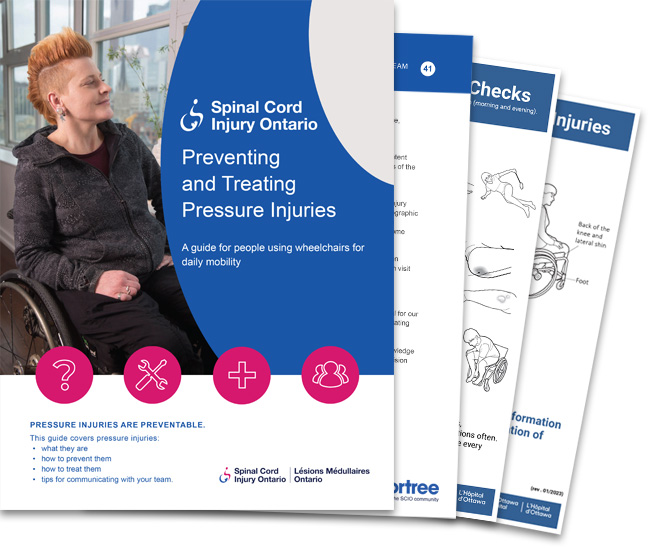Today, we talk with Sylvia Coates about occupational therapy for spinal cord injury, and aging and spinal cord injury. Sylvia, a registered Occupational Therapist, joins Oda for a talk virtually from her clinic in Pickering. She has over 15 years of experience working with clients with neurological conditions and complex clinical presentations. Her current practice is with Complex Injury Rehab Inc. providing both clinic and community-based Occupational Therapy services. Sylvia and Oda cover a lot of topics, including introducing some adaptive equipment and assistive devices that can help you with day-to-day needs, helping you to manage your energy and keep you safe and independent at home.
This video content was created as part of a project funded by a grant from the Craig H. Neilsen Foundation to Spinal Cord Injury Ontario.
Through carefully chosen activities, occupational therapy helps people reach the highest degree of functionality and independence possible in all facets of their lives. Occupational Therapists use real-world, activity-based procedures and exercises to enhance one’s capacity for participation in daily life. A person with a spinal cord injury might practice getting out of bed or brushing their teeth, for instance. Following spinal cord injury, occupational therapy uses both restorative and compensatory techniques to maximize independence and reduce problems.
If you’ve found this video, you’re probably looking for more information about:
- occupational therapy for spinal cord injury
- aging and spinal cord injury with Sylvia Coates occupational therapist
- occupational therapy assessments for spinal cord injury
- OT for spinal cord injuries, and overcoming spinal cord injury
- rehabilitation for spinal cord injury
- spinal cord injury and aging
- spinal cord injury rehab
- Spinal Cord Injury Ontario for SCI recovery
The goal of restorative techniques is to restore bodily functions lost as a result of spinal cord damage. The spinal cord’s adaptability allows for the recovery of motor and sensory capabilities despite spinal cord damage being irreversible. However, as neuroplasticity can only occur in neuronal circuits that have not been destroyed, persons who suffer more severe or total spinal cord injuries may only experience partial functional recovery. An occupational therapist can help people use compensatory strategies and new ways to complete routine tasks. For people with SCI, the surroundings might be changed, the activity might be modified, or the person might learn how to use equipment and compensating techniques.
If you enjoyed this video with Sylvia Coates about occupational therapy for spinal cord injury, and aging and spinal cord injury, please remember to like, share, subscribe, and leave a comment if you have any questions or suggestions. I hope to see you here again soon!






